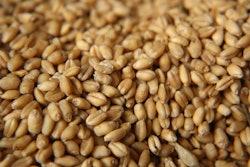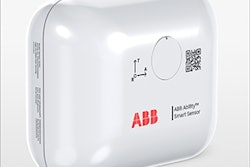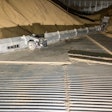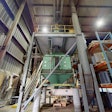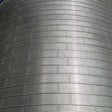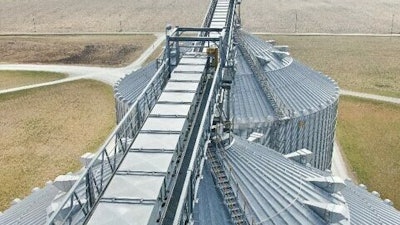
There are two critical and equally important reasons to makeconveyor maintenancea focus: safety and reducing downtime.
A grain processing or feed milling facility is a complex system of many machines, most of which are essential to its ability to create value. With any operation, ensuring all employees go home safely every day is just as important as the bottom line.
“A well-maintained conveyor is less likely to experience mechanical failures,” says Mat Tallman, global product manager forGSI.
A failure that occurs in heavy moving parts could pose a hazard to those working on or around the conveyor, says Tallman.
“Likewise, any such failure could break a critical link in the facility’s operation, and leave the entire facility idle, resulting in significant cost and disappointed customers.”
When it comes to any type of facility maintenance, safety is always the first consideration.
Strict adherence to lock-out, tag-out practices to ensure any conveyor being worked on cannot operate is of utmost importance. Wearing proper PPE while performing maintenance is also critical.
Keep an eye on these conveyor components
Conveyors are fundamentally very simple machines and attention to a few key components should prevent many of the most common problems.
Most conveyors, whether drag-style chain conveyors or belt conveyors, should have regular attention devoted to ensuring the chain or belt has adequate tension and no excessive slack.
“A loose chain in a chain conveyor can result in damage to the conveyor housing, or the chain itself, and a loose belt in a belt conveyor can even result in a fire or explosion in extreme cases,” says Tallman.
Some equipment suppliers offer monitoring sensors to better detect problems before they become a hazard. These monitors can also alert maintenance personnel so action can be taken.
“It’s no secret that machines and systems across all industries are becoming smarter and more connected than ever before,” says Tallman.
“Agricultural equipment is no exception to this. These trends are only expected to accelerate in the coming years.”
Other common points to pay attention to include bearing and gear reducer lubrication and drive belt tension. Keeping these components maintained can easily prevent costly failures.
How to select the right conveyor belt
Selecting the right conveyor belt is critical for a grain processing or feed milling facility.
“A static discharge can be hazardous in a dusty grain facility,” says Nate Tostenson, general manager, Belting Division withApplied Power Products. “A static discharge could lead to an ignition and grain explosion.”
Static conductivity, fire retardancy and oil resistance is crucial for grain handling equipment.
“It’s very important that the belting you use meets or exceeds the standards fromOSHAandISO,” Tostenson says.
Standards for static conductivity are 300 megohms or less, fire retardancy must meet or exceed theUS MSHA/RMA 30 CFR 18.65 requirement, and always use an oil-resistant belt. When selecting a belt for a grain processing facility, always request a SCORF belt.
“A conveyor belt can burn quickly,” says Tostenson. “Common ignitions start from friction, or slipping, at the head pulley, overheated bearings or seized idler/return rollers.”
Best practices are to replace the head pulley lagging when replacing the belt and perform regular conveyor inspections for any seized bearings or rollers. Also keep in mind proper belt tensions and PIW (pounds per inch of width).
“Think of PIW for belting the same as you would think of horsepower ratings for a motor,” says Tostenson.
“Trust a reputable belt manufacturer and distributor to help with the required specification for your needs,” he adds. “Look for a vendor that can perform belt tension calculations and answer technical questions.”
Inspect your conveyor system daily
Many problems can be identified with a simple daily walk-around. While you’re at it, keep your ears open.
“Never underestimate the importance of sound in the detection of mechanical issues,” says Tallman.
“Just listening to a conveyor run daily can alert attentive personnel to subtle changes going on in within and stop an issue before it becomes severe.”
Periodically removing top covers and observing the conveying chain or belt can easily identify damage or other problems that may otherwise go undetected.
How to keep conveyors clean
Your path to keep conveyors clean depends upon the type of facility you’re managing.
“A commercial grain handling facility may get by with a yearly cleaning to remove any material buildup,” says Tallman. “A feed or seed facility may require attention each time a different material type is conveyed to ensure no cross-contamination occurs.”
One common point for material accumulation is the tail section, where stagnant material can combine with ambient moisture to create a hardened buildup.
Remove this accumulation before it solidifies and take steps to limit moisture intrusion to minimize this occurrence.
Conveyors can be equipped with clean-out style tails to further mitigate this buildup and prevent stagnation. They can even be designed with special bottoms along the entire conveyor to ensure more complete cleanout.
Conveying system designed to move corrosive materials
How do you combat the need to have long-lasting reliable material handling conveyors when you are dealing with highly corrosive products such as salt, lime and dicalcium phosphate in your feed mill?
K&S Millwrights, an authorizedSweet Mfg.dealer in Ohio, has an option for its local feed mills that features a durable conveyor designed to meet challenging work conditions.
TheRound Bottom Flite-Veyorhas easy cleanout capabilities. Constructed of 3/16-inch-thick stainless steel, these units can be configured with a stainless-steel chain and nylon paddles.
The conveyors can also include gasketing material to produce fully enclosed equipment that will function for years without the need to replace liners or perform internal maintenance to the conveyor's body.
这些输送机装有唇密封或有把握的事情seals to provide a barrier between the inside and outside environment.
By using the seals on the head and tail shafts, the product cannot escape and damage the bearings resulting in premature failure.






